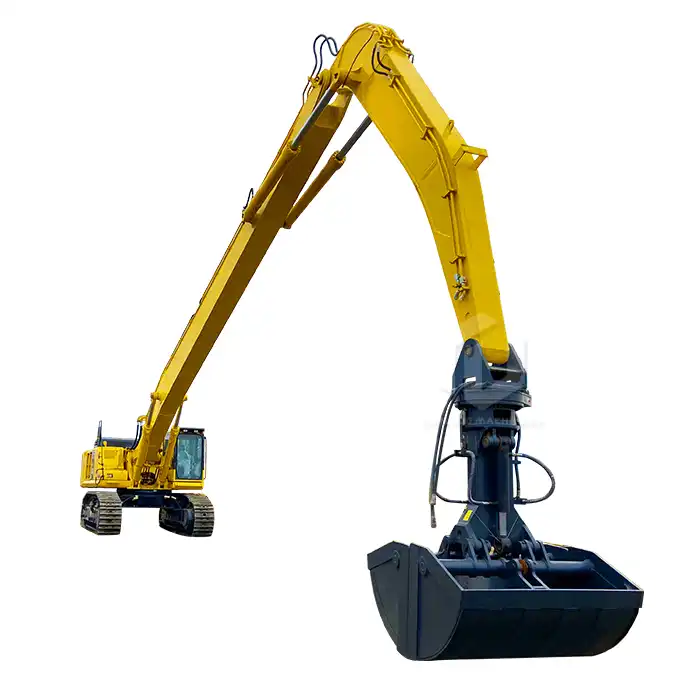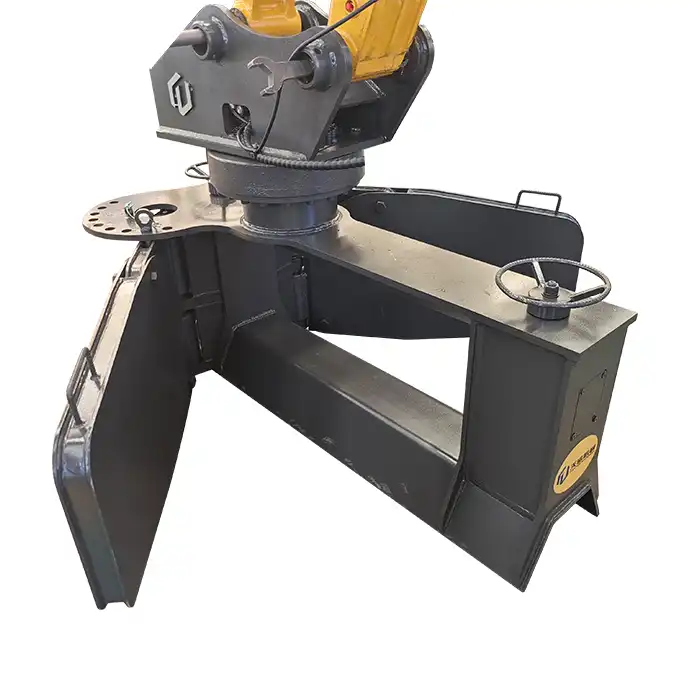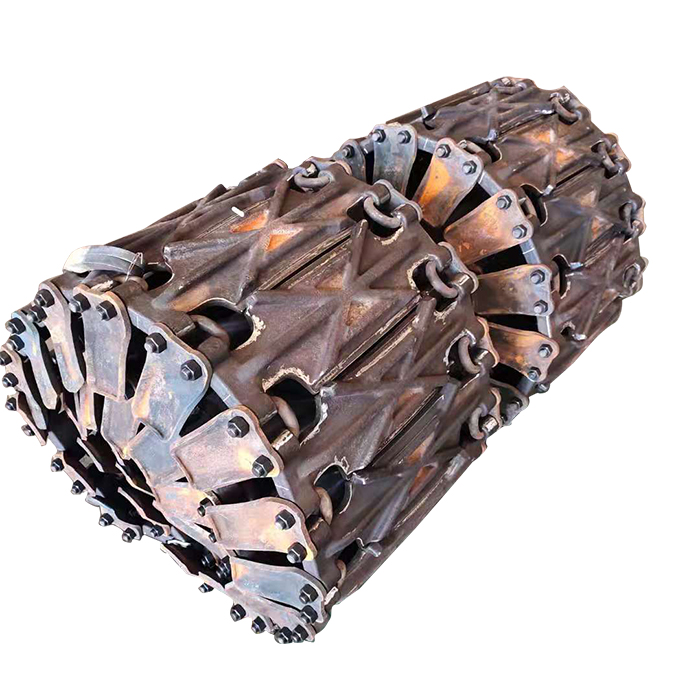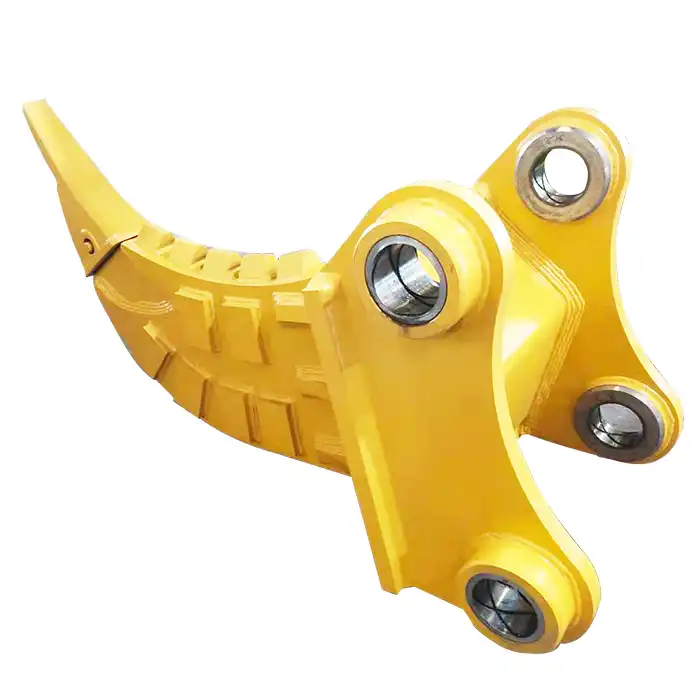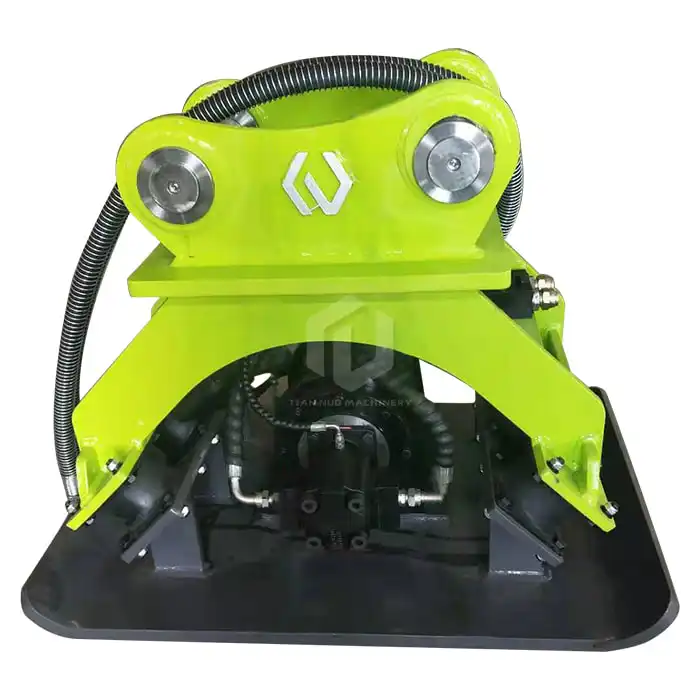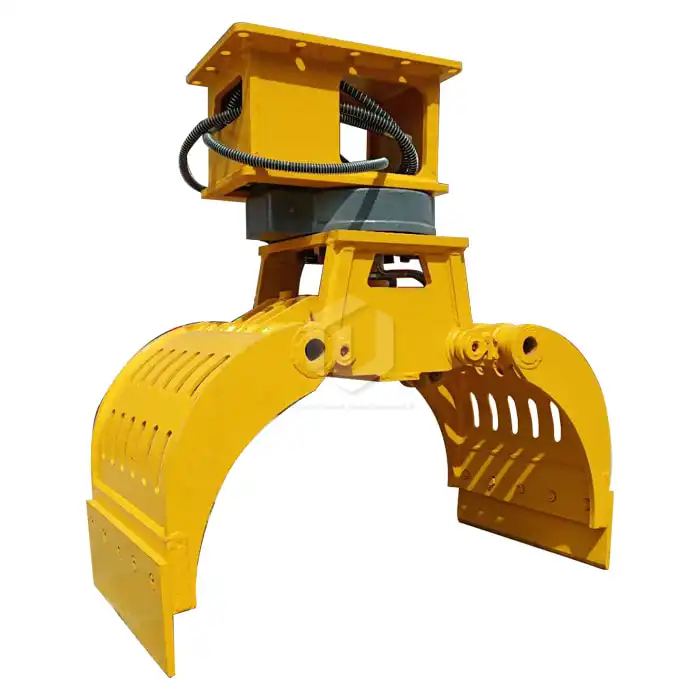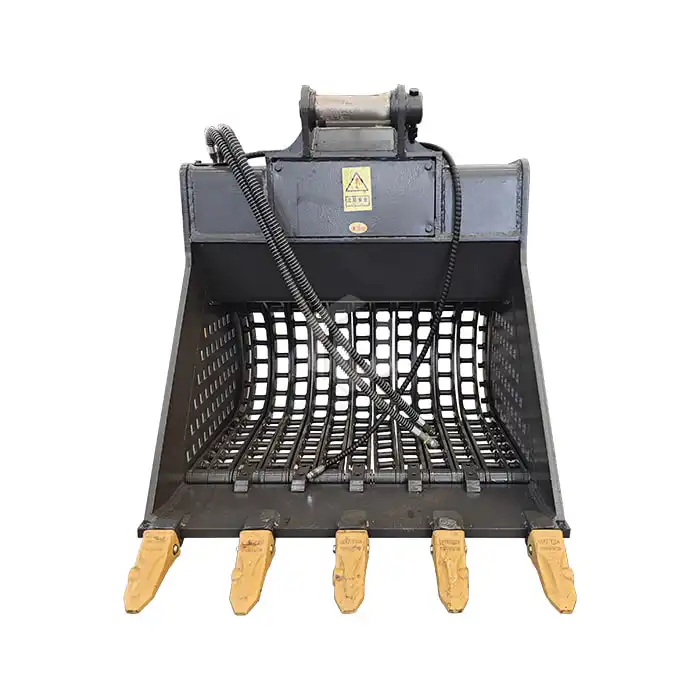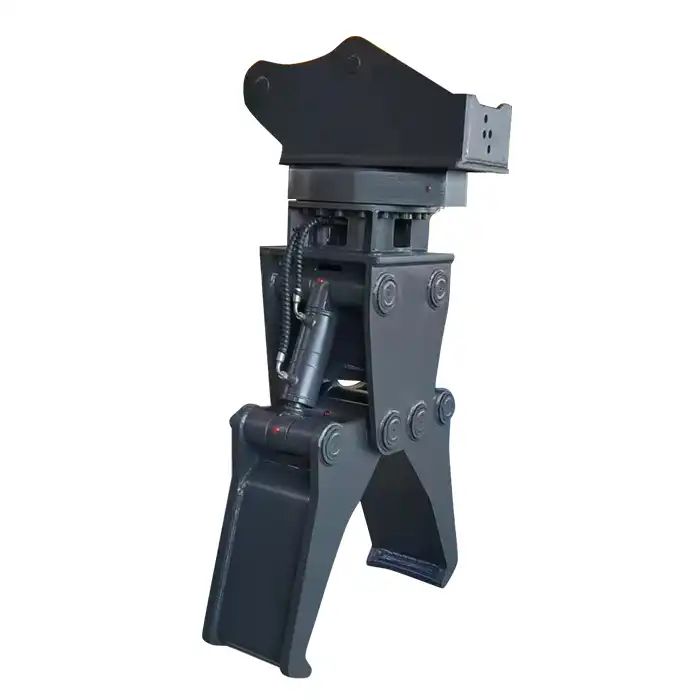How big is a front loader bucket?
When it comes to heavy machinery, the front loader bucket is an essential component that plays a crucial role in various construction and earthmoving projects. Understanding its dimensions and capabilities is vital for operators and project managers alike. Shandong Tiannuo explores the typical size of a front loader bucket, delves into its design specifications, and discusses how these factors impact its performance and utility.

Front Loader Bucket Size
Front loader buckets come in various sizes, designed to suit different applications and machine capacities. The size of a front loader bucket is typically measured by its width, depth, and capacity. These dimensions are crucial in determining the bucket's efficiency and suitability for specific tasks.
Let's take a closer look at the dimensions of a typical front loader bucket, using the Shante ZL50 as an example:
- Width (b): 2.24 m
- Bottom Width (bw): 0.5969 m
- Depth (a): 0.025 m
These measurements provide insight into the bucket's overall size and shape. The width (b) of 2.24 meters indicates the total span of the bucket, which is a significant factor in determining how much material it can scoop in a single pass. The bottom width (bw) of 0.5969 meters represents the narrower base of the bucket, which is designed to penetrate materials more easily.
The depth (a) of 0.025 meters might seem shallow at first glance, but it's important to note that this measurement likely refers to the thickness of the bucket's material rather than its digging depth. The actual digging depth of a front loader bucket is typically much greater and depends on factors such as the loader's arm reach and the angle at which the bucket is positioned.
It's worth noting that these dimensions can vary significantly between different models and manufacturers. Factors such as the intended use, the size of the loader itself, and specific customer requirements all play a role in determining the final dimensions of a loader bucket.
Capacity And Performance of Front Loader Buckets
While the physical dimensions of a front loader bucket are important, its capacity and performance characteristics are equally crucial. These factors directly impact the efficiency and productivity of the machine in various applications.
For instance, let's consider the rated load capacity, using the XCMG ZL50GL as an example:
- Rated Load: 5000 kg
This impressive load capacity of 5000 kg (or 5 metric tons) demonstrates the substantial lifting and carrying capabilities of modern front loader buckets. This capacity allows operators to move significant amounts of material in a single operation, greatly enhancing productivity on job sites.
Another crucial performance metric is the unloading height. For our example model:
- Unloading Height: 3090 mm
An unloading height of 3090 mm (approximately 10 feet) provides operators with considerable flexibility in terms of where they can deposit materials. This height allows for easy loading of most trucks and hoppers, making the front loader a versatile tool in construction, mining, and material handling applications.
It's important to note that the actual performance of a front loader bucket can be influenced by various factors, including:
- The type of material being handled (e.g., soil, gravel, sand)
- The skill and experience of the operator
- The condition of the working surface
- The overall maintenance and condition of the loader
These factors can affect how close to the rated capacity an operator can safely work, as well as the efficiency of loading and unloading operations.
Choosing the Right Front Loader Bucket for Your Needs
Selecting the appropriate front loader bucket for a specific application requires careful consideration of several factors. While the dimensions and capacity we've discussed provide a good starting point, there are additional aspects to consider:
- Material Density: Different materials have varying densities, which affect how much can be safely carried in a single load. For instance, a bucket full of gravel will weigh significantly more than the same volume of soil.
- Job Site Conditions: The terrain and space constraints of your work area can influence the ideal bucket size. Tighter spaces might require a narrower bucket, while open areas allow for larger, more efficient options.
- Frequency of Use: If the loader will be used frequently for heavy-duty tasks, investing in a more durable, higher-capacity bucket might be worthwhile.
- Attachment Compatibility: Ensure that the chosen bucket is compatible with your specific loader model and its quick-attach system, if applicable.
- Special Features: Some buckets come with additional features like wear plates, spill guards, or teeth for specific applications. Consider whether these features would benefit your operations.
It's also worth noting that many manufacturers offer customization options for front loader buckets. This allows buyers to tailor the bucket's dimensions, capacity, and features to their specific needs, ensuring optimal performance and efficiency for their unique applications.
When evaluating front loader buckets, it's crucial to consider not just the initial purchase cost, but also the long-term value in terms of durability, efficiency, and suitability for your specific tasks. A well-chosen bucket can significantly enhance the productivity and versatility of your front loader, making it a valuable investment for your operations.
Front Loader Bucket for Sale
Understanding the dimensions, capacity, and performance characteristics of front loader buckets is crucial for making informed decisions in construction and earthmoving projects. Whether you're looking for a standard bucket or a custom solution, it's essential to partner with a reputable manufacturer who can provide high-quality products tailored to your specific needs.
Tiannuo Machinery is a leading manufacturer and supplier of high-quality buckets, with over 10 years of experience in the industry. Specializing in OEM services, we offer fast delivery, strict packaging standards, and support customization to meet the diverse needs of our clients. If you are choosing your front loader bucket manufacturer, welcome to contact Our manager's email is arm@stnd-machinery.com and the team's emails are rich@stnd-machinery.com and tn@stnd-machinery.com. Our team of experts is ready to assist you in finding the perfect front loader bucket solution for your specific requirements, ensuring optimal performance and productivity for your operations.
References:
- XCMG Official Website: Product Specifications
- Construction Equipment Guide: Understanding Loader Bucket Sizes
- Heavy Equipment Forums: Discussion on Front Loader Bucket Dimensions
- Journal of Construction Engineering: Analysis of Loader Bucket Efficiency

